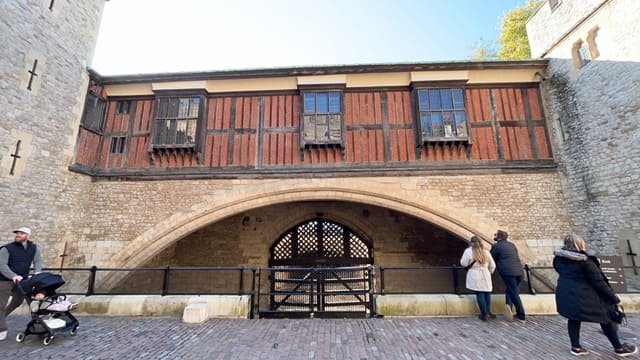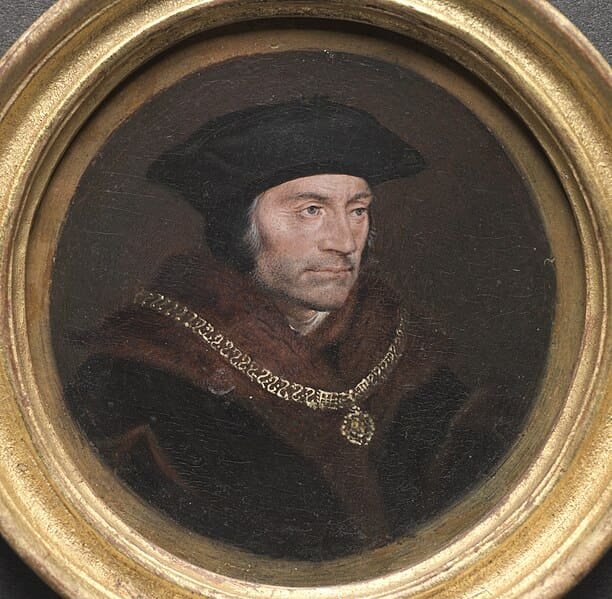
Audio Guide Script
This is Traitors’ Gate, one of the most infamous and historically significant entrances to the Tower of London. As you stand before this imposing watergate, let me take you back through centuries of intrigue and drama.
The Traitors’ Gate was built during the reign of King Edward I in the late 13th century. Originally known as the Water Gate, it served as a royal entrance to the Tower, allowing monarchs and dignitaries to arrive by boat from the River Thames.
However, its name and purpose soon took a darker turn. By the 16th century, this entrance became known as the Traitors’ Gate, as it was used to bring prisoners accused of treason into the Tower. Imagine the fear and dread felt by those who passed through these arches, knowing they were entering a place from which they might never return.
Many famous prisoners have passed through the Traitors’ Gate over the centuries. Sir Thomas More, accused of treason by Henry VIII, entered here in 1534. Two years later, Henry’s second wife, Anne Boleyn, followed the same route, arriving by barge to face her imprisonment and eventual execution.
The journey to the Traitors’ Gate was designed to be intimidating. Prisoners would be brought along the River Thames, passing under London Bridge where the heads of executed prisoners were displayed on spikes – a grim warning of what might await them.
As you look at the gate, notice its impressive architecture. The wide stone arch spans the river, flanked by two towers. The left tower, known as St. Thomas’s Tower, adds to the gate’s forbidding presence.
Today, the Traitors’ Gate stands as a powerful symbol of the Tower’s long and often dark history. It serves as a reminder of the power struggles, political intrigues, and human dramas that have played out within these walls over the centuries.
As we move on from the Traitors’ Gate, consider the many souls who passed through it, from royalty to rebels, and how their stories have shaped the history of England. The gate may no longer receive prisoners, but it continues to captivate visitors with its tales of treachery and tragedy.
About Sir Thomas More

As we stand here in the Tower of London, imagine a man of deep conviction and intellect held within these very walls — Sir Thomas More, a respected statesman, scholar, and devout Catholic. More served as Chancellor of England under King Henry VIII and was widely admired for his principles and integrity. However, these very qualities would lead to his downfall.
In the 1530s, King Henry VIII found himself at odds with the Catholic Church, seeking an annulment from Catherine of Aragon to marry Anne Boleyn. When the Pope denied his request, Henry took unprecedented steps, declaring himself the Supreme Head of the Church of England, breaking with Rome. This act demanded loyalty from all, requiring key subjects to sign the Oath of Supremacy, which recognized Henry’s authority over the church.
Sir Thomas More, however, could not reconcile this new order with his devout beliefs. He refused to acknowledge Henry as the head of the Church in England, remaining silent rather than openly opposing the king. Nonetheless, his silence was interpreted as defiance. In 1534, More was arrested and imprisoned here, within the Tower, where he would spend over a year.
Despite severe conditions, More remained steadfast, continuing to write letters to his family and quietly reflecting on his faith. In 1535, he was convicted of treason and subsequently executed on Tower Hill, just beyond these walls.
More’s legacy endures as a man of conscience, remembered for his unwavering moral stance and the famous last words he spoke at his execution: ‘I die the King’s good servant, and God’s first.’ His story serves as a poignant reminder of the complex struggles for power, faith, and loyalty that unfolded within the Tower of London.
Let’s go back to the fork and climb the stairs to St. Thomas’s Tower, where you can see how medieval royals lived.
